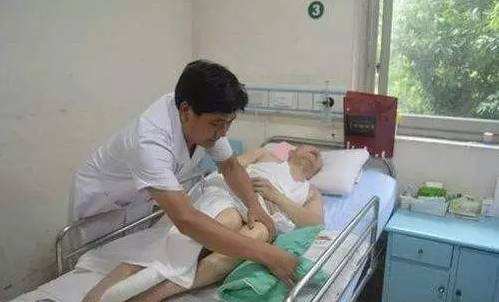Risk of hip fracture in the elderly
An older relative's hip injury is a wake-up call for the body, which is far more serious than another bone fracture, because hip fractures greatly increase the risk of death in older people.
One of three adults aged 50 years and over died within 12 months of a hip fracture. Compared with non-hip fractures, the risk of death in the first 3 months of hip fractures in the elderly is 5 to 8 times that of other types. The risk of death has continued to increase for almost a decade.
In addition to enduring pain, hip fractures can lead to loss of physical function, reduced social interaction, increased dependence, and poor quality of life. Many people with hip fractures need to change their living environment because their families cannot work with them for long periods of time because of work.
Therefore, it is necessary to move from home to the nursing home and take care of the disabled patients.
Eventually, the health of the elderly deteriorates after hip fractures.

Risk factors for hip fractures
Age is a critical risk factor, and hip fractures are more likely to occur in people age 65 and older. Mainly caused by a fall or when the hips collide with a hard object such as a kitchen bench. However, hip fractures also occur with little or no trauma, such as when standing up.
Cognitive disorders such as dementia are common factors that increase the risk of falls. Weakness, poor vision, mixed use of medications, and the risk of being tripped at home also increase the risk of falling. Osteoporosis is a disease characterized by low bone mass and bone tissue degradation, and is another important risk factor for hip fractures.
Osteoporosis and osteoporosis (bone mass below normal but not yet osteoporosis) have been reported to affect more than one million Australians aged 65 and over. Worldwide, an average of every three women and one in five men suffer from fractures due to this weak bone, and fractures occur every three seconds. The consequences of a hip fracture are the worst compared to any other bone fracture.
Although the cause is unknown, hip fractures do not disproportionately affect those who are socially disadvantaged.
Previous research has shown that about 30% of patients with hip fractures have a history of fractures, which is called a “cascading fracture”. The subsequent increase in the risk of fractures may persist for a decade, so how important it is to treat early fractures in a timely and effective manner.
Increased risk of death
In Australia, standard clinical care after hip fractures begins with timely assessments, including X-rays, pain and cognitive assessments. Australian data indicate that more than three-quarters of hip fracture patients undergo surgery, and the most common surgery is joint replacement. Surgical intervention typically occurs within 48 hours.
But some patients may be reluctant to undergo surgery. Or their medical team may think the surgery is too risky to allow the patient to undergo surgery.
Combined with trauma from fractures and surgery, existing health conditions may significantly increase the risk of death. Mortality after a hip fracture may also be related to other complications of the fracture, such as infection, internal bleeding, stroke, or heart failure.
One study showed that heart disease, stroke, and pneumonia doubled the long-term risk of death after hip fractures, with women lasting up to a decade and men up to two decades.
Studies have shown that problems related to hospitalization, surgery, or inactivity after a fracture (which can lead to pneumonia in patients) lead to other complications and ultimately lead to early death.
How to improve patient prognosis?
In combination with controlling postoperative pain symptoms, patients should receive therapeutic rehabilitation and functional training to better restore physical function.
Taking personal circumstances, physical health and function into account, therapeutic rehabilitation can include improved range of motion, swimming pool treatments, and some intensive and progressive resistance training. Functional training includes gait training and resistance balancing exercises.
Even if the patient is not undergoing surgery, they must recover as soon as possible to avoid serious complications that affect physical activity.
Some data suggest that starting physical activity as soon as possible after surgery reduces the possibility of death. But we don't know the type, intensity, or duration of activities that will give the best results.
Nutrition also helps the body recover. Some data show that malnourished patients after a fracture have reduced their ability to walk independently after six months compared to well-nourished people.
There is still debate about whether nutritional supplements can help improve hip fractures. But the combination of protein intake and physical activity can increase muscle mass and function. Good muscle mass and function reduces bone fragility and improves balance, which reduces the risk of falls and subsequent fractures.
Sharon Brennan-Olsen
Senior Fellow, University of Melbourne, NHMRC Career Development Fellow
原文链接:
https://theconversation.com/why-hip-fractures-in-the-elderly-are-often-a-death-sentence-95784
 简体中文
简体中文  English
English  日本語
日本語 